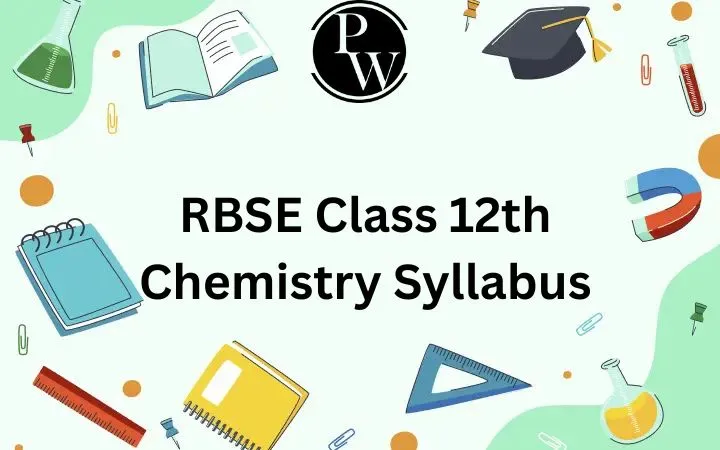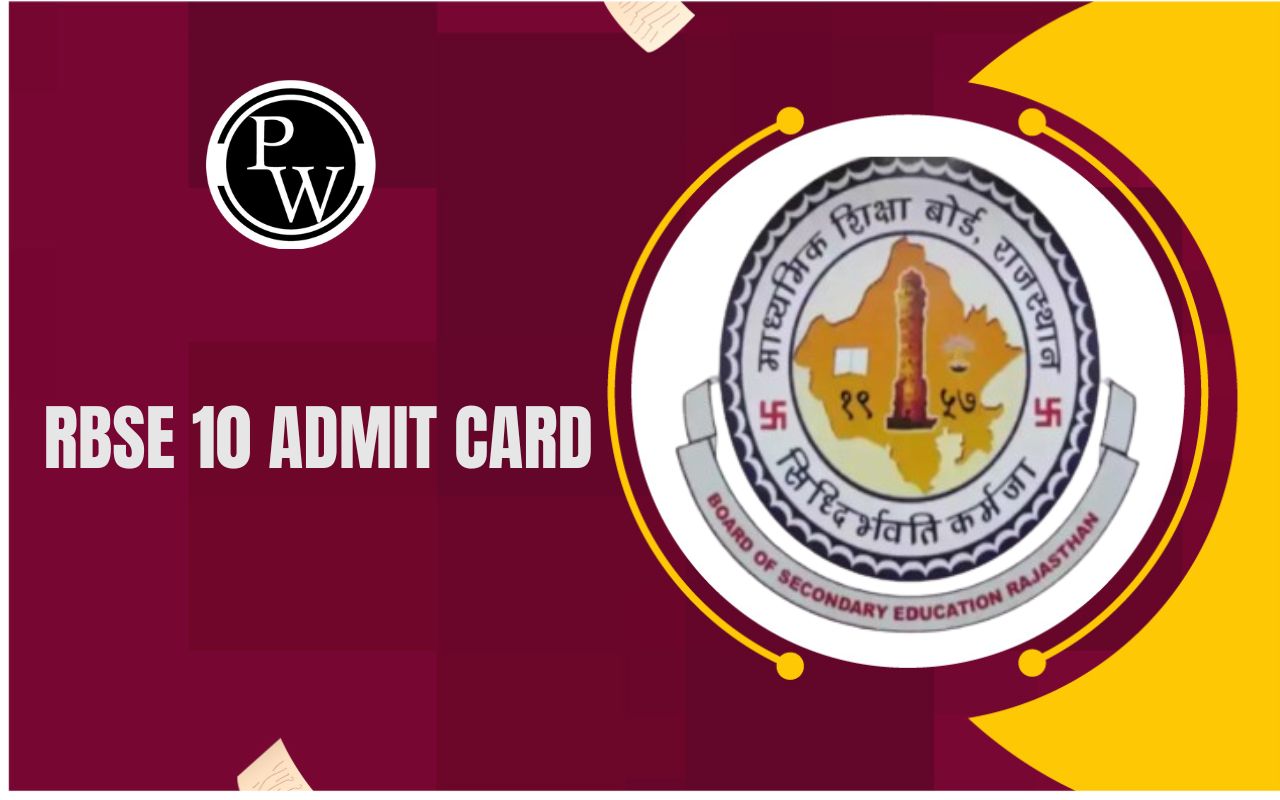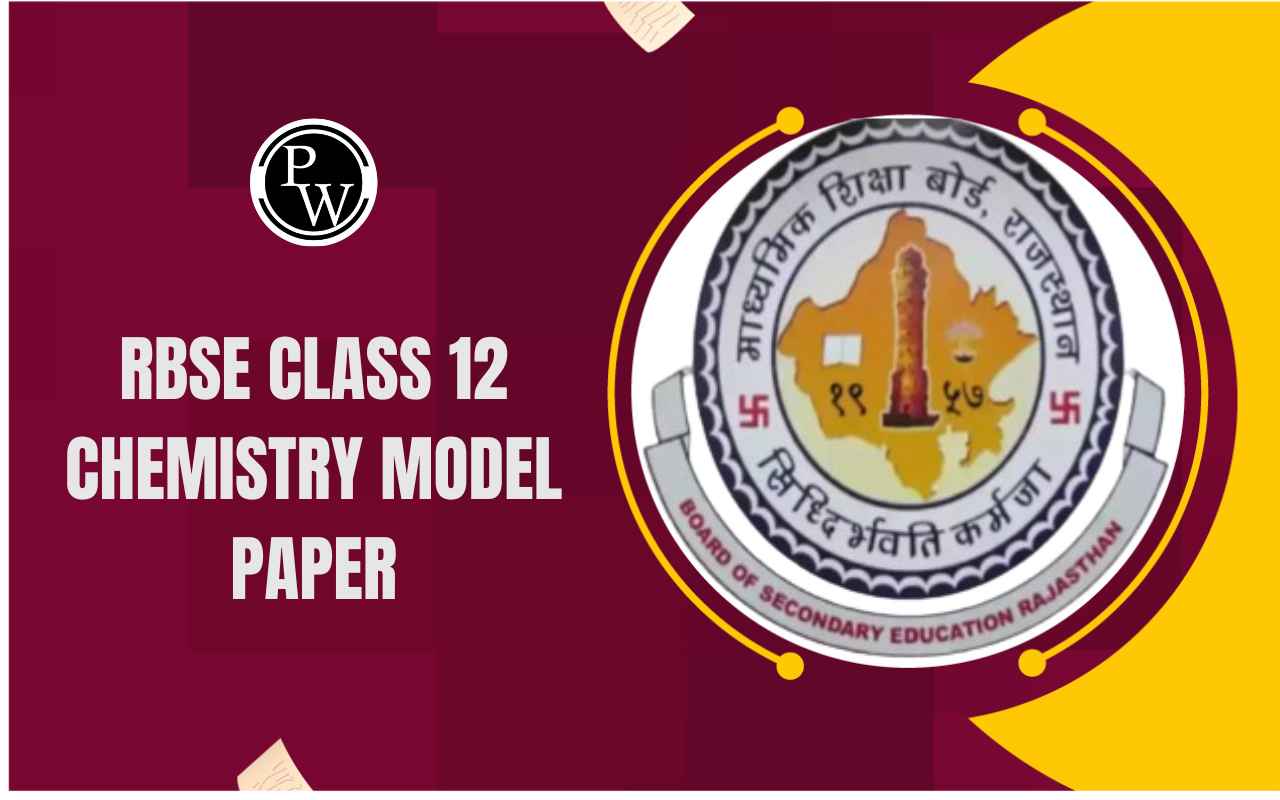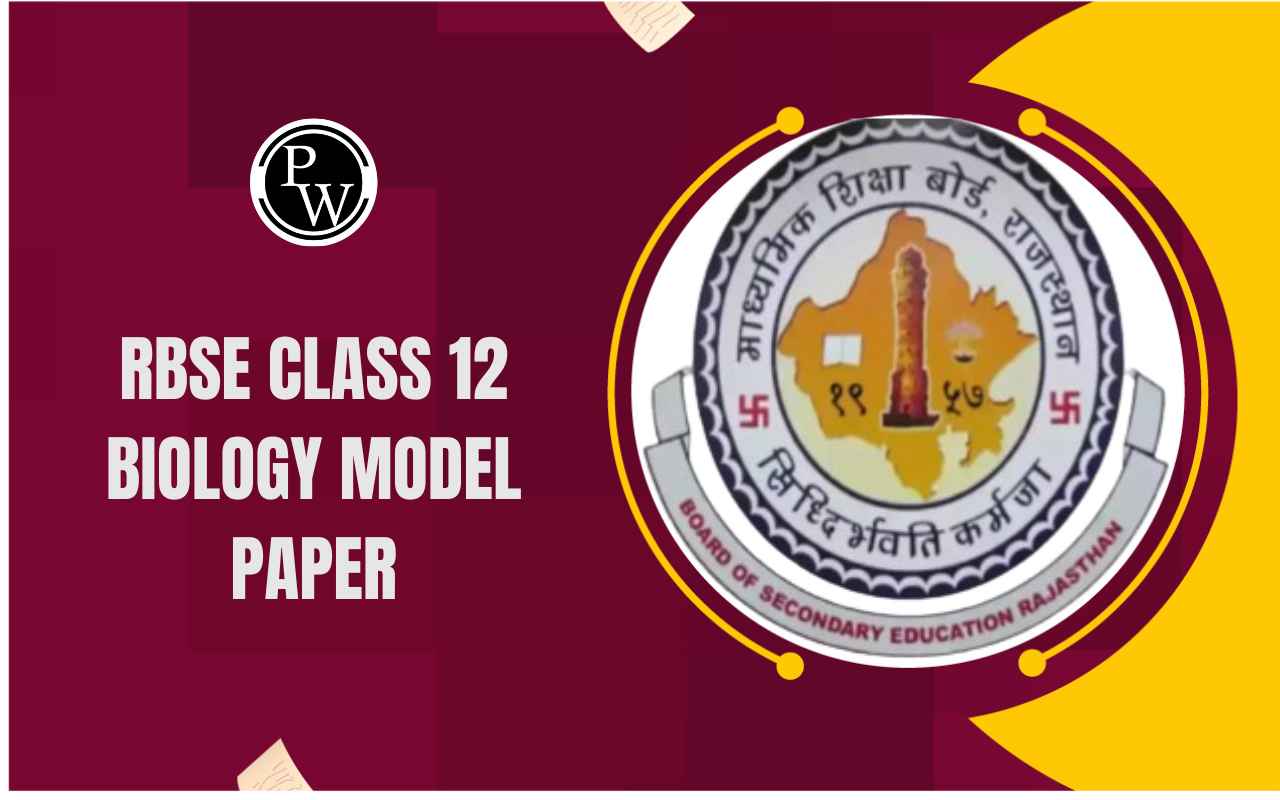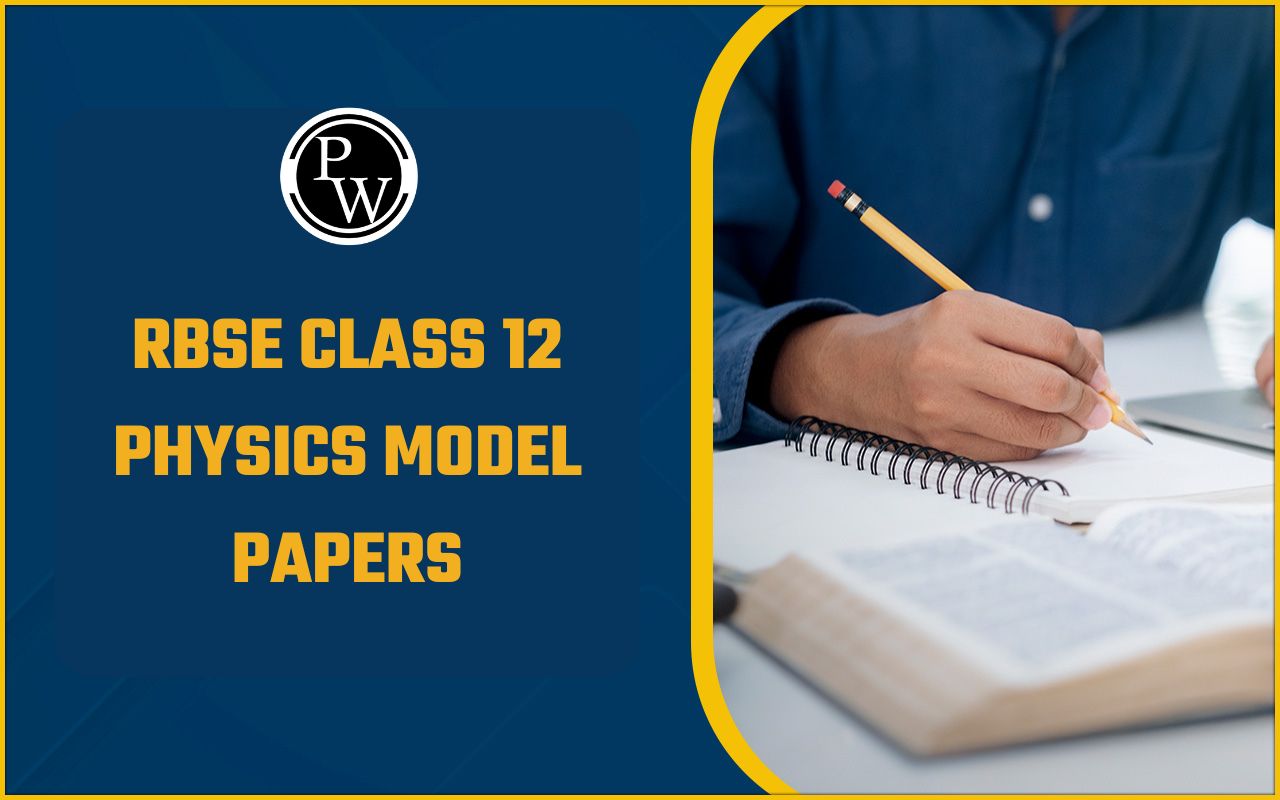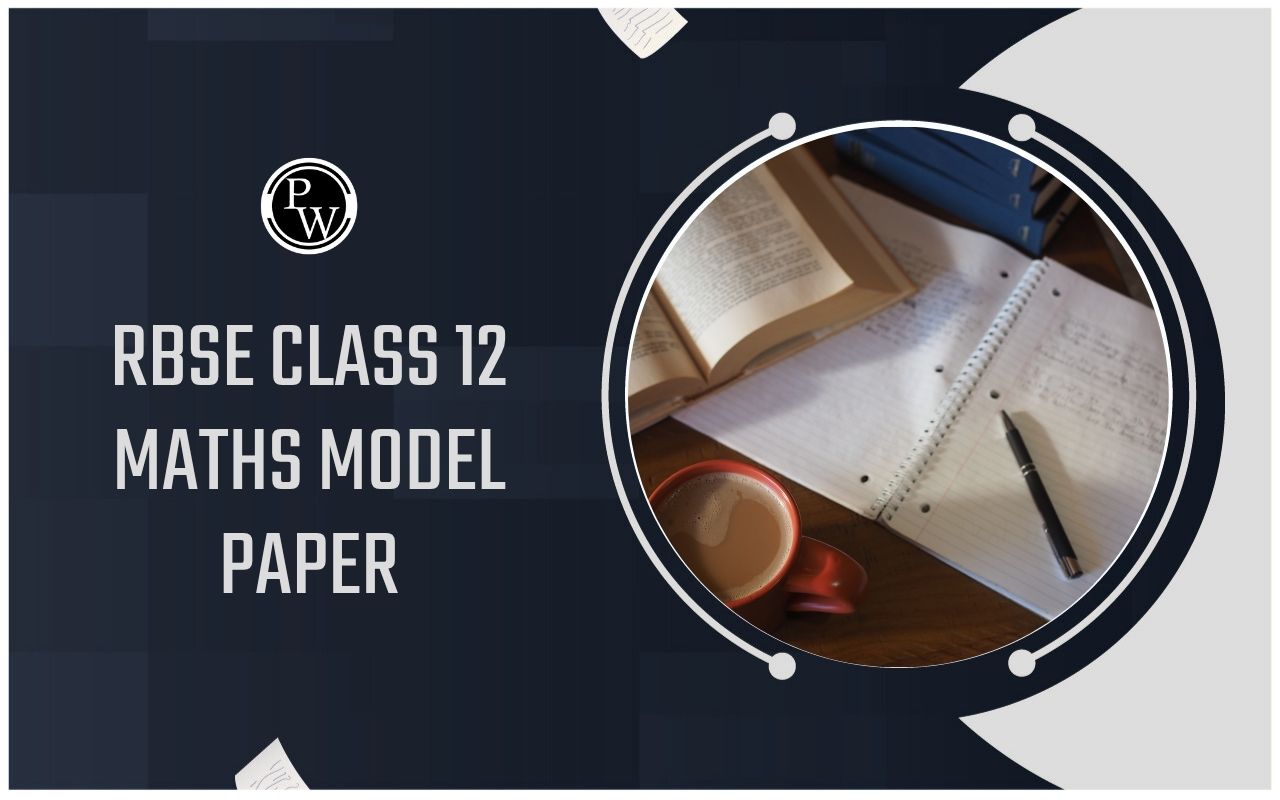
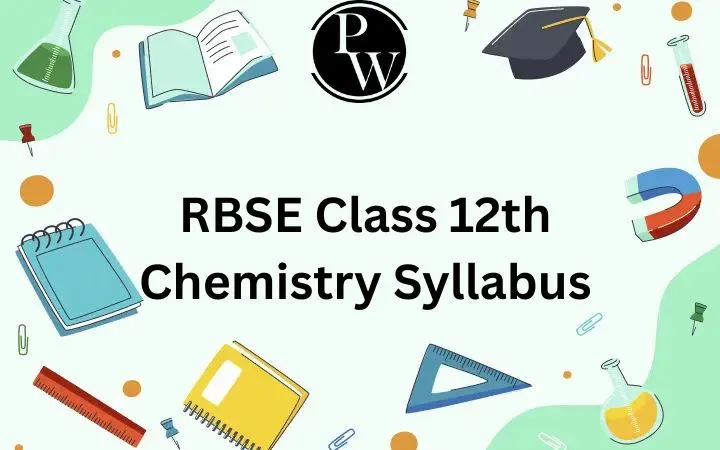
RBSE Class 12th Chemistry Syllabus: The RBSE Class 12th Chemistry syllabus is designed to help students build a strong foundation in physical, organic, and inorganic chemistry.
Understanding the syllabus thoroughly is essential for effective exam preparation. The exam pattern includes both theoretical and practical assessments, with emphasis on conceptual clarity and application-based questions.
Students should review previous year papers to understand the types of questions asked and the marking scheme. The syllabus covers key topics like electrochemistry, chemical kinetics, coordination compounds, and biomolecules. Following the syllabus and solving previous year papers can boost confidence and improve performance in the final board examination.
RBSE Class 12th English Syllabus
RBSE Class 12th Chemistry Syllabus
The RBSE 12th Syllabus for Chemistry includes essential topics from physical, inorganic, and organic chemistry, aligned with the latest exam pattern. To score well, students should understand the concepts thoroughly and refer to previous year papers. Check the table below for a complete list of chapters included in the RBSE Class 12 Chemistry syllabus for the academic year.
|
RBSE Class 12th Chemistry Syllabus |
|
|
Chapter No. |
Chapter Name |
|
1 |
Solid State |
|
2 |
Solutions |
|
3 |
Electrochemistry |
|
4 |
Chemical Kinetics |
|
5 |
Surface Chemistry |
|
6 |
General Principles and Processes of Isolation of Elements |
|
7 |
The p-Block Element |
|
8 |
The d- and f-Block Elements |
|
9 |
Coordination Compounds |
|
10 |
Haloalkanes and Haloarenes |
|
11 |
Alcohols, Phenols, and Ethers |
|
12 |
Aldehydes, Ketones and Carboxylic Acids |
|
13 |
Organic Compounds Containing Nitrogen |
|
14 |
Biomolecules |
|
15 |
Polymers |
|
16 |
Chemistry in Everyday Life |
RBSE 12th Class Maths Syllabus
Detailed Overview of RBSE Class 12th Chemistry Syllabus
Here is an overview of the RBSE Class 12th Chemistry syllabus -
-
Solid State
This chapter explores the structure of solids, including crystalline and amorphous forms. It covers unit cells, packing in solids, and types of defects in solids. Important for understanding material properties. -
Solutions
Focuses on types of solutions, methods of expressing concentration, and Raoult’s law. Includes colligative properties and their calculations. Useful for understanding solution behavior and practical chemistry. -
Electrochemistry
Covers electrochemical cells, EMF, and the Nernst equation. Also includes electrolysis and conductance of electrolytic solutions. This chapter links chemistry with electricity. -
Chemical Kinetics
Discusses rate of reaction, factors affecting rate, and rate laws. Also includes integrated rate equations and collision theory. Helps students understand how reactions proceed over time. -
Surface Chemistry
Includes adsorption, catalysis, and colloidal states. Focuses on the role of surfaces in chemical reactions and industrial applications. Key for understanding heterogeneous systems. -
General Principles and Processes of Isolation of Elements
Introduces metallurgy and steps involved in extracting metals from ores. Discusses refining methods and thermodynamic principles. Crucial for industrial chemistry. -
The p-Block Element
Deals with group 15 to group 18 elements and their compounds. Emphasis is on structure, bonding, and properties. Vital for understanding non-metals and their usage. -
The d- and f-Block Elements
Covers transition and inner-transition elements, their properties, and uses. Discusses color, magnetic properties, and complex formation. Important for competitive exams. -
Coordination Compounds
Introduces ligands, coordination number, and isomerism in complexes. Also includes bonding theories and applications in biological systems. Foundation for advanced inorganic chemistry. -
Haloalkanes and Haloarenes
Covers the structure, nomenclature, and reactions of halogenated compounds. Emphasis on substitution and elimination reactions. Useful for understanding organic reaction mechanisms. -
Alcohols, Phenols, and Ethers
Discusses preparation, properties, and uses of alcohols, phenols, and ethers. Covers electrophilic substitution and dehydration reactions. Key for pharmaceutical chemistry. -
Aldehydes, Ketones and Carboxylic Acids
Focuses on carbonyl-containing compounds, their preparation, and nucleophilic addition reactions. Important for biomolecule synthesis and organic transformations. -
Organic Compounds Containing Nitrogen
Includes amines, cyanides, and isocyanides. Discusses methods of preparation, chemical reactions, and basicity. Relevant for understanding nitrogen metabolism. -
Biomolecules
Covers carbohydrates, proteins, vitamins, and nucleic acids. Explains structure, classification, and functions. Links chemistry with biology. -
Polymers
Introduces natural and synthetic polymers, their classification, and methods of polymerization. Discusses commercial uses and properties. Important for materials science. -
Chemistry in Everyday Life
Highlights the role of chemistry in daily life through topics like drugs, soaps, detergents, and food additives. Encourages practical understanding and real-world application.
Steps to download RBSE Class 12th Chemistry Syllabus
Here are the steps to download the RBSE Class 12th Chemistry Syllabus in simple pointers:
-
Visit the official RBSE website: https://rajeduboard.rajasthan.gov.in
-
On the homepage, look for the “Syllabus” section or click on the “Books/Syllabus” link.
-
Select Class 12 from the available class options.
-
Choose the subject – Chemistry from the list.
-
Click on the download icon or link to open the PDF.
-
Save the PDF to your device for offline reference.
RBSE Class 12th Chemistry Syllabus PDF Download
Students preparing for the RBSE Class 12th board exams can now easily access the latest Chemistry syllabus in PDF format. Understanding the complete syllabus is essential to align your preparation with the exam pattern and important topics.
It also helps in identifying scoring areas and planning your study schedule effectively. Referring to the syllabus while solving RBSE Class 12 Previous Year Question Papers can enhance your performance. Below, we have provided the direct link to download the RBSE Class 12th Chemistry Syllabus PDF for your convenience.
RBSE Class 12th Chemistry Syllabus
Study without using the internet
RBSE Class 12th Chemistry Exam Pattern and Marking Scheme
To help students prepare effectively, it is important to understand the RBSE 12th Exam Pattern for Chemistry and marking scheme. It provides clarity on how the marks are distributed between theory and practical exams. Knowing this helps in planning a balanced preparation strategy. Below, we have provided the detailed exam pattern and marking scheme for your reference.
Note: Below we have provided a basic structure, it is always advised to check the official website.
|
RBSE Class 12th Chemistry Exam Pattern and Marking Scheme |
|||
|
Component |
Details |
Marks |
Duration |
|
Theory Exam |
Written paper with MCQs, Short and Long Answer Questions |
70 Marks |
3 Hours |
|
Practical Exam |
Laboratory-based assessment including experiments and viva |
30 Marks |
— |
|
Total |
Combined Theory + Practical |
100 Marks |
— |
|
Passing Criteria |
Minimum 33% in both components |
— |
— |
RBSE Class 12th Chemistry Syllabus for Practical Examination
The RBSE Class 12th Chemistry syllabus for the practical examination includes essential experiments that test students' hands-on skills and conceptual understanding. Practical components such as titration, qualitative analysis, and viva are key for scoring well. Students must maintain proper records and perform confidently. Check the table below for the detailed marking scheme and list of practical activities.
|
RBSE Class 12th Chemistry Syllabus for Practical Examination |
||
|
S.No. |
Practical Component |
Marks |
|
1 |
Titrimetric Analysis (Redox Reactions) |
10 |
|
2 |
Systematic Qualitative Analysis |
06 |
|
3 |
Tests for Functional Groups in Organic Compounds OR Preparation of Organic and Inorganic Compounds |
04 |
|
4 |
Content Based Experiment |
05 |
|
5 |
Record and Viva |
05 |
Preparation Tips for RBSE Class 12th Chemistry Exam
Here are RBSE Class 12th Preparation Tips for Chemistry Exam, categorized by branch:
Physical Chemistry Tips
-
Understand Concepts First: Before solving problems, ensure you understand the underlying principles, such as laws of thermodynamics or rate laws.
-
Memorize Key Formulas: Keep a formula sheet handy for topics like Chemical Kinetics, Electrochemistry, and Solutions.
-
Practice Numerical Problems: Solve a variety of problems to gain speed and clarity, especially those involving calculations and graphs.
Organic Chemistry Tips
-
Focus on Mechanisms and Reactions: Understand how and why reactions occur, especially for name reactions like Aldol, Cannizzaro, and Reimer-Tiemann.
-
Revise Functional Group Tests: These are important both in theory and practical exams; be thorough with their observations.
-
Practice Conversion-Based Questions: Regularly solve problems that ask for transformation from one compound to another in multiple steps.
Inorganic Chemistry Tips
-
Memorize Periodic Trends: Pay special attention to group-wise properties of p-block and d-block elements.
-
Learn Color, Solubility, and Test Results: Especially useful for qualitative analysis and viva questions in practical exams.
-
Focus on Coordination Compounds: Understand types of ligands, IUPAC naming, isomerism, and hybridization.
Practical Exam Tips
-
Be Thorough with Lab Procedures: Know the steps, precautions, and observation patterns for each experiment.
-
Maintain a Neat Record File: A well-maintained practical file with diagrams and observations can fetch full marks.
-
Revise Viva Questions: Be prepared to answer basic questions related to the experiments you perform.
| Other Important Links: | |
| RBSE 12th Toppers List 2025 | RBSE 10th Toppers List 2025 |
| RBSE 12th Result 2025 | RBSE Board 10th Result 2025 |
RBSE Class 12th Chemistry Syllabus FAQs
Is the NCERT book sufficient for RBSE Class 12 Chemistry?
Is the RBSE Class 12th Chemistry syllabus divided into theory and practical?
What is the marks distribution between theory and practical?
Are diagrams included in the RBSE Class 12th Chemistry exam?

